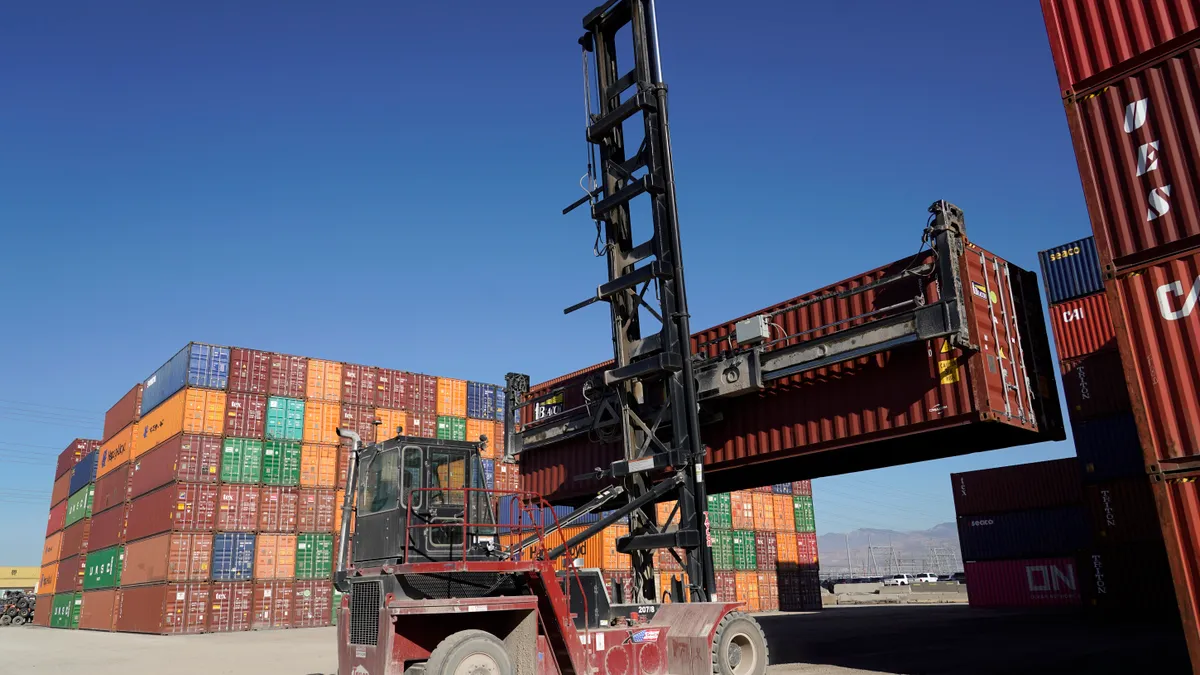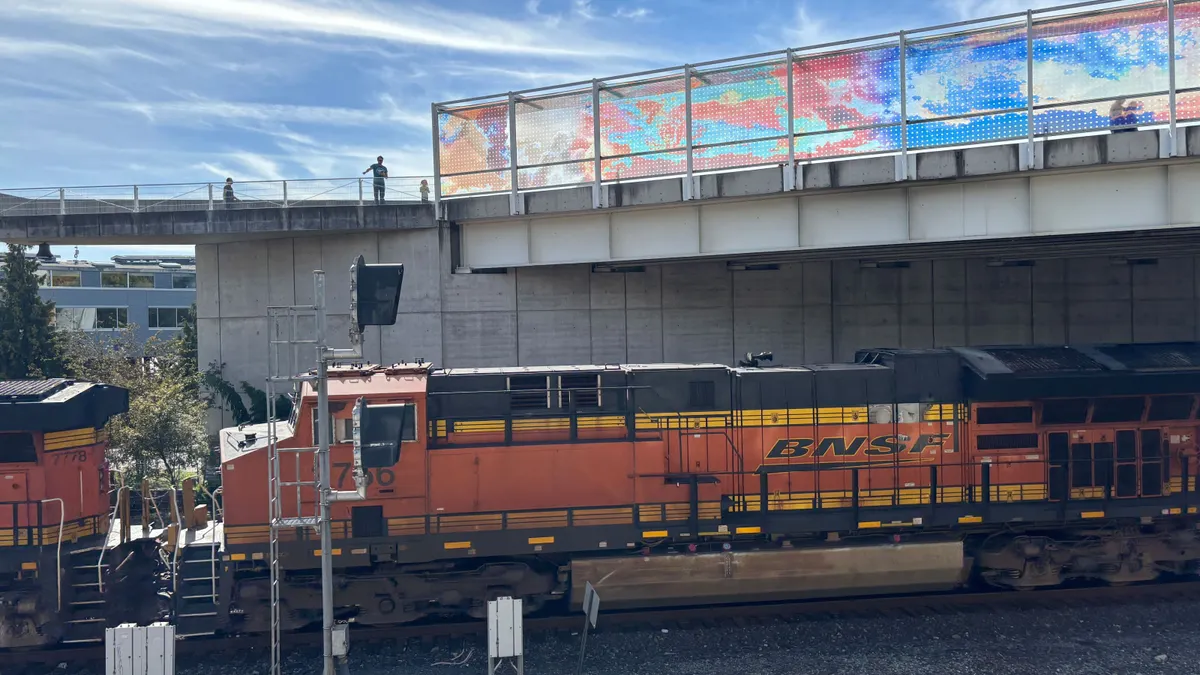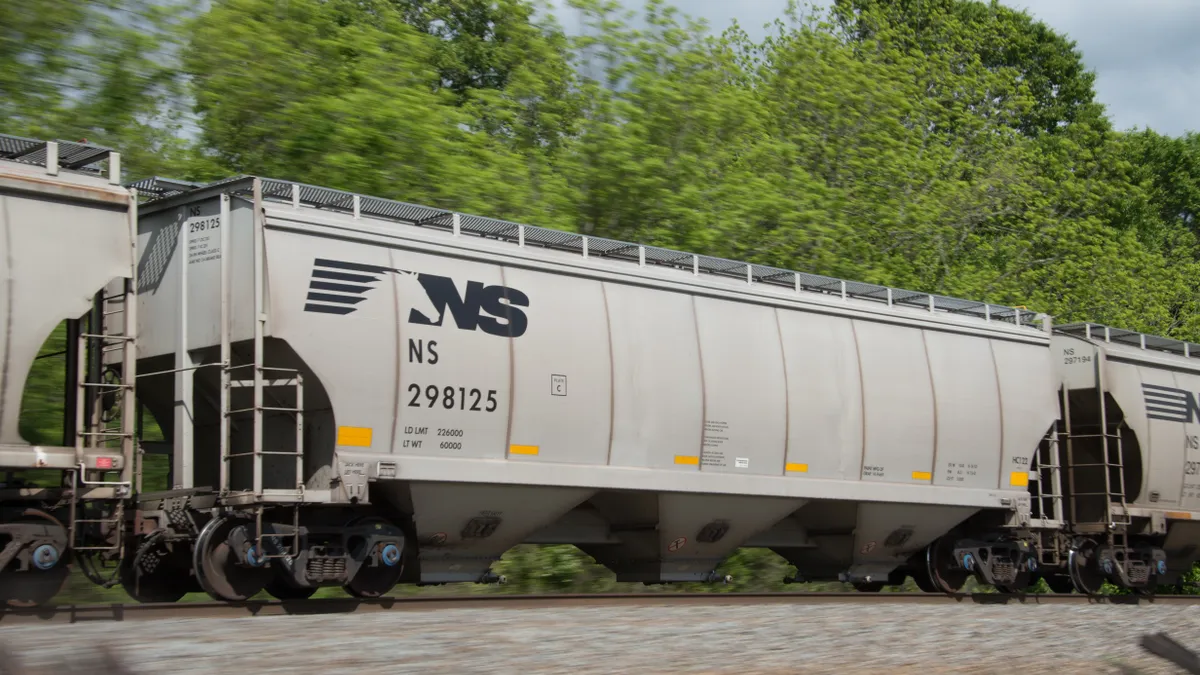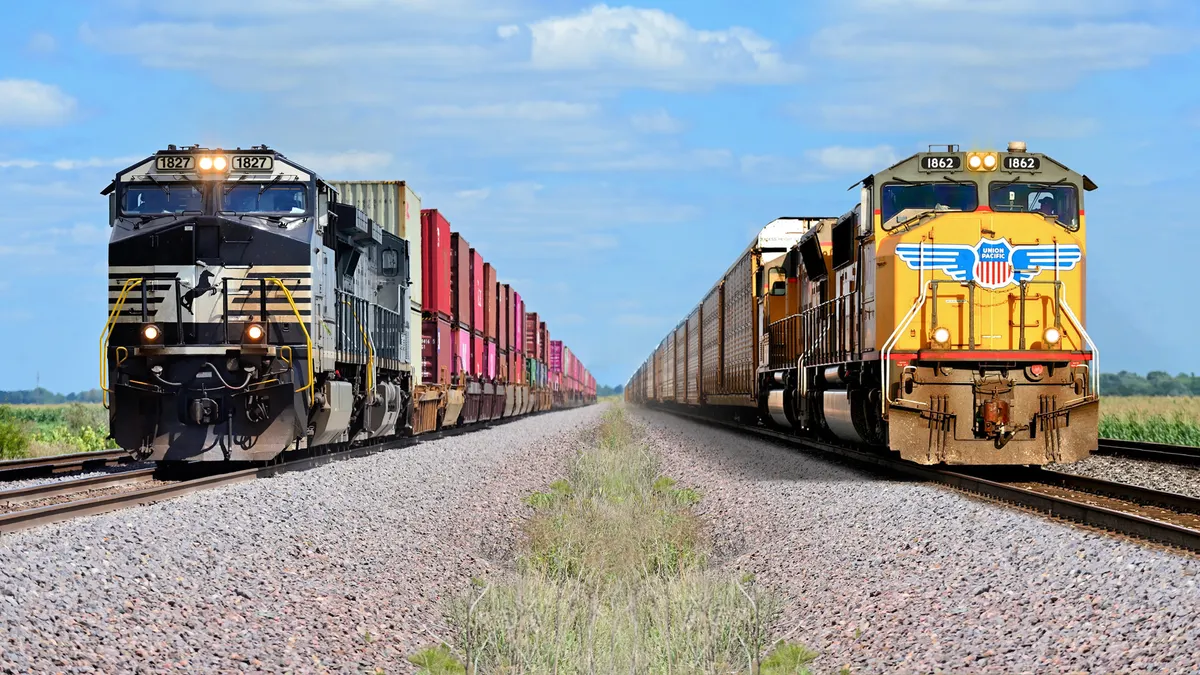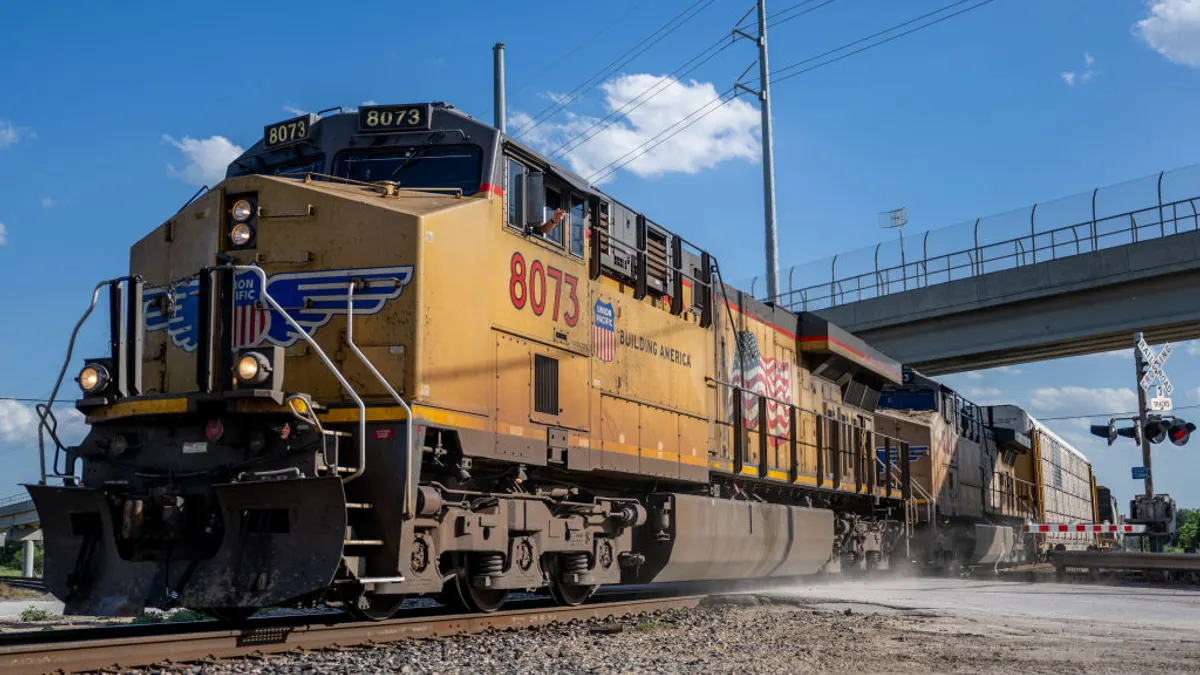Railroads set a new record in 2021 — but not a favorable one from a shipper's perspective.
The seven Class I railroads that operate in the United States collected $1.18 billion in revenues from demurrage fees during the first three quarters of 2021. That's the highest annual figure recorded since at least 2011, according to data reported to the Surface Transportation Board. And shippers often ended up on the receiving end of the bill.
The ballooning revenues, created in part by a surge in imports and transportation demand, have raised a critical question which shippers and railroads fundamentally disagree on: Who's at fault for congestion?
The two parties point the finger at each other as to who should take responsibility for bottlenecks — and the associated costs.
Shippers say they were on the hook for fees even in cases where reduced rail service prevented them from accessing their cargo.
In a June letter to the STB, the Fertilizer Institute said CSX reduced service for its member companies from five days a week to once a week amid challenges in hiring, and that led to automated demurrage bills sent to shippers.
"It's insult to injury — here you are having issues either receiving or sending product and it is costing you money to come up with alternatives," said Scott Jensen, communications director of the American Chemistry Council. "And then the railroads are penalizing you in demurrage."
Railroads argue demurrage fees — which take effect when cargo stays beyond a specified time at a terminal — are an essential tool to keep cargo moving. Railyards were overwhelmed with a flood of imports coming from West Coast ports last summer. Carriers said shippers would leave their cargo at railyards due to warehouse space constraints, a lack of truck drivers and shortages in equipment such as chassis.
Storage fees quickly added up as yards remained backlogged with containers. Demurrage revenue reported to the STB grew 33% between 2020 and 2021, the second-highest YoY increase over the past decade (the highest was between 2017 and 2018).
Class I railroads hit a new record in 2021
In an emailed statement to Supply Chain Dive, Union Pacific said it collected more demurrage revenue in 2021 after seeing a 40% increase in container dwell times in its yards and a 20% increase in the time it takes shippers to return equipment in 2021.
Canadian National made a similar claim in an August letter to the STB, in which it wrote congested yards were "primarily the result of logistics challenges affecting intermodal shippers' access to, and decisions on how to allocate, the resources (chassis, draymen, loading dock space, etc.) needed to handle inbound intermodal shipments."
Fee revenue grows as service drops
Shippers say current service issues stem from pre-pandemic cuts made under precision scheduled railroading, an operating model that emphasizes lean networks and maximizing profits.
"One of the concerns that was raised early on in PSR....is [railroads] really trying to run as lean as possible. They're actually taking trains and crews and sightings and all that stuff out of service," said Jensen. "And the concern was, how resilient will that be? Well, here we are."
As part of PSR and during the pandemic, railroads reduced employee headcounts, shifted service schedules, shuttered yards and cut the amount of free time containers can remain at a terminal before storage fees take effect. But when demand rebounded after the pandemic, shippers say carriers struggled to rebuild service.
The dynamic has led demurrage fees, which are charged more frequently in constrained shipping environments, to become a revenue-driver for some railroads. Sean Pelkey, acting CFO of CSX, told investors demurrage and related fees were among the biggest drivers of income for CSX in Q3, for example.
Demurrage revenues skyrocket after PSR is adopted
But many of the railroads insist revenue via demurrage is not the goal.
"KCS sees demurrage as an important tool to keep the railroad fluid and moving and avoid equipment positioning issues for better customer service, not a revenue source that we seek to increase," the railroad said in an emailed statement.
In a statement to Supply Chain Dive, CSX spokesperson Cindy Schild said the company expects demurrage revenue to decrease as supply chain congestion eases, but noted the fees have helped keep the network fluid in an environment where shippers are facing scarce storage space and labor challenges.
"CSX's preference is that our terminals and yards operate with consistent and efficient throughput without the need to charge demurrage, but it's nonetheless a vital and effective way of furthering fluidity within our terminals and throughout our rail network," Schild said.
Regulators step in
Contention around the validity of demurrage charges has pushed federal regulators to take a more active approach in ensuring railroads are clearly communicating charges and only imposing fees as an incentive to speed up network fluidity.
Railroads define demurrage differently, and each carrier charges a base rate that can rise further based on factors such as car type or the commodity being transported. In some cases, railroads increase the per diem fee charged to shippers depending on how long a container dwells at a rail yard, which would have a multiplier effect on revenue. Other times, the sheer number of dwelling containers caused by a congested environment can quickly accrue a high fee total.
Shippers have complained it was difficult to validate charges, and that there was little information on why demurrage was being charged and in which context.
"People were having difficulty in sorting through the actual billing process," said Jensen, adding that the confusion required shippers to spend more on resources to audit invoices. "But at the same time, now you have these billing issues, and you have to commit more time and resources to figuring out the justification for the demurrage."
How individual railroads charge for demurrage varies
| Railroad | Range of daily demurrage fees |
|---|---|
| BNSF | $150 to $500, depending on container dwell time and facility |
| CN | $100 to $450, depending on container dwell time and facility |
| CP | $75 to $350, depending on container dwell time, facility and who owns the equipment |
| CSX | $100 to $500, depending on container dwell time, facility and whether the equipment is for domestic or international use |
| KCS | $100 per day after free time expires, in all cases |
| NS | $100 to $300, depending on container dwell time and facility |
| UP | $100 to $225, depending on container dwell time, facility and whether the equipment is for domestic or international use |
SOURCE: Letters in response to the STB, as linked. Union Pacific did not disclose its specific fees in the letter, but its rates are available online.
New rules from the STB could make it easier for shippers to audit and dispute bills.
Class I railroads now have to charge shippers demurrage fees directly instead of sending bills to terminal operators or third-party logistics providers, according to an STB rule that went into effect in 2020. Another rule, enacted Oct. 6, requires railroads to provide machine-readable access to minimum information on billing, including details on the billing cycle covered by the invoice, the car involved, the commodity being shipped, and railroads' original estimated time of arrival for the cargo in question.
The rules are meant to bring more transparency to the billing process and ensure demurrage charges are appropriate. Requiring information on original ETAs, for example, can help "rail users to better understand whether there are delays in shipment beyond carriers' initial expectations and will lead to better communication between carriers and rail users about the causes of demurrage," the STB wrote in its final rule.
Railroads including CN and CSX argued the new requirements would encourage unnecessary litigation and push shippers to challenge invoices based on technical issues, not the validity of a demurrage charge. Shippers disagree, saying disputing charges are costly and take a significant amount of time.
The new billing requirements will discourage carriers from "engaging in unreasonable demurrage practices and charges" and will "allow shippers and receivers to more effectively monitor, identify, and challenge unreasonable demurrage practices and charges where they do occur," said Ann Warner, spokesperson for the Freight Rail Customer Alliance.
Despite the new rules, railroads say demurrage remains one of the biggest levers they can pull to get shippers to pick up their cargo and prevent further congestion.
"If demurrage were eliminated or capped, making storage effectively free at a certain point, we would stand-out as a cost-free storage facility during times of high demand and our terminals would quickly reach capacity," CSX wrote in a letter to the STB.
Editor's note: This story was first published in our Logistics Weekly newsletter. Sign up here.




